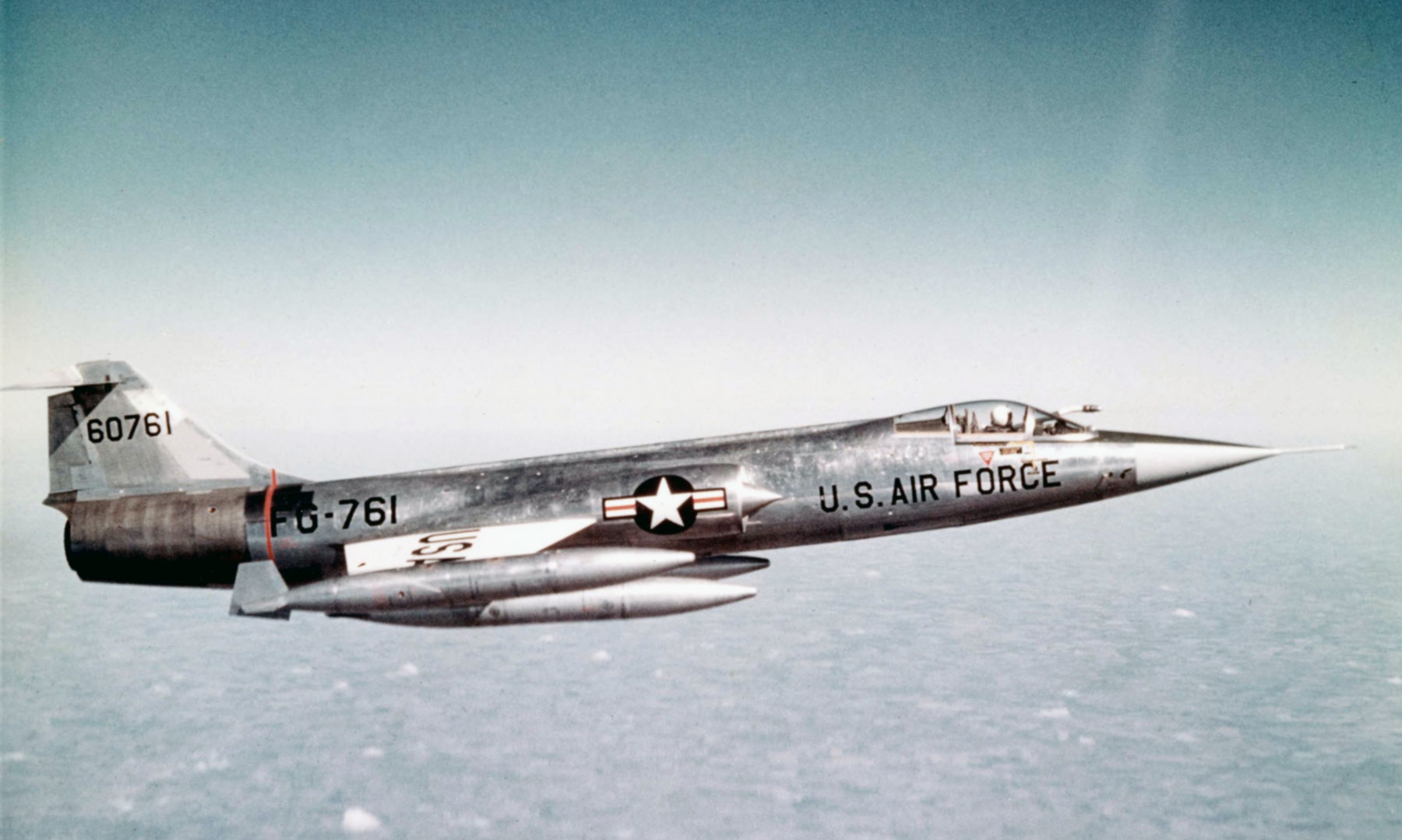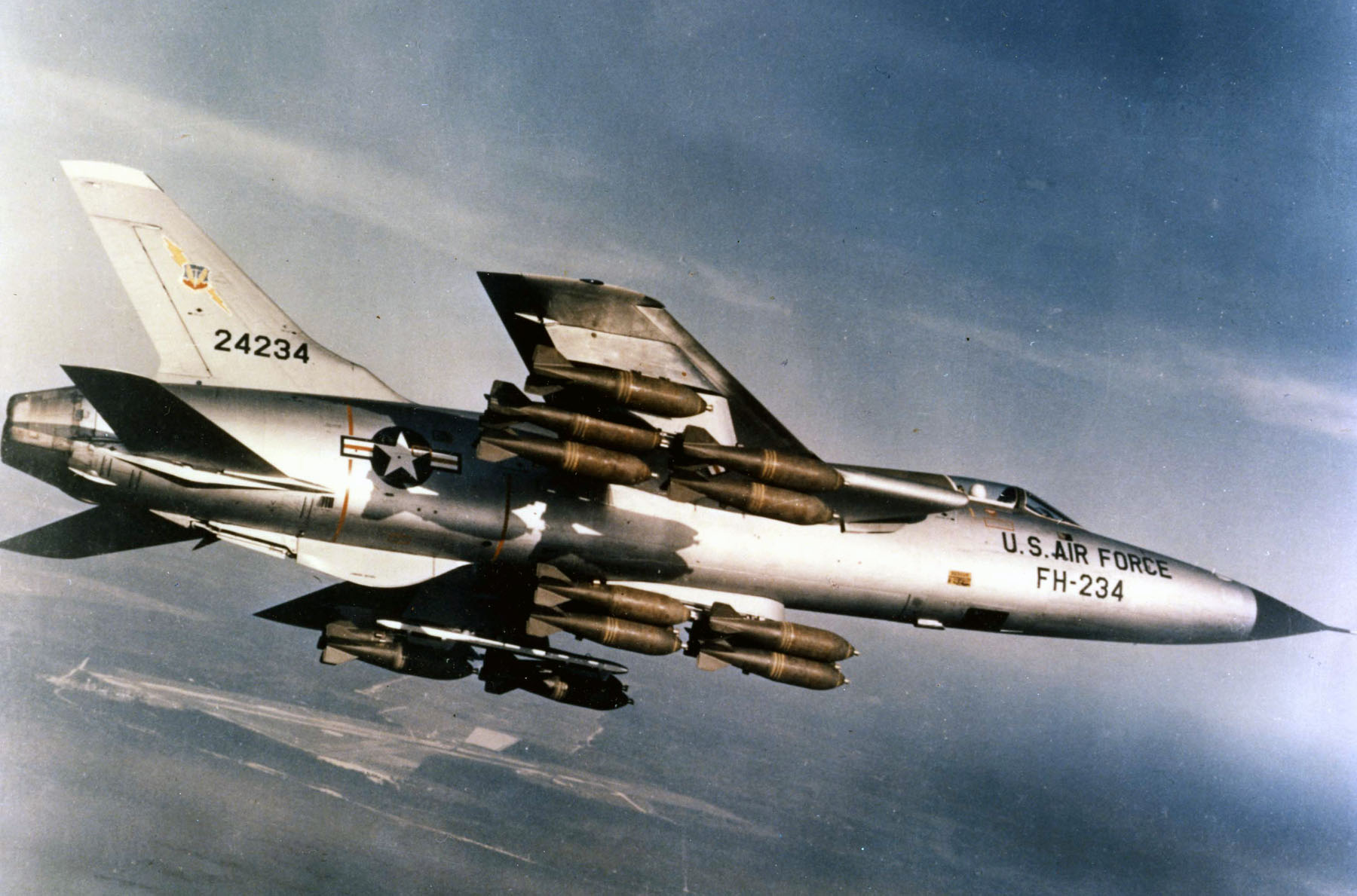Zippers, Widowmakers and Groundnails:

Having only recently been retired in 2004, the F-104 was perhaps one of the most successful of the Century Series aircraft. Lockheed’s infamous Skunk Works designed it, and it was the product of a visit to Korea undertaken by Clarence “Kelly” Johnson in 1951, where, upon interviewing several fighter pilots he began to realize that many of the pilots were interested in having a simple, efficient airplane. Johnson believed that he had the answer, and from the Skunk Works drawing boards issued the F-104 Starfighter.
Although it could not carry a payload sufficient to see it lumped in with the fighter-bombers, its abortive stint with Air Defense Command would seem to suggest it could not be grouped appropriately with the interceptors either. Air Defense Command bemoaned the lack of range, and felt that its armament was insufficient, leaving the airplane somewhat purposeless for a time. The A model F-104s were only in service for a year before being transferred to the National Guard. And the C models with TAC would meet a similar fate.
Though it was never really able to exploit a niche in the United States Armed Forces, its foreign service was extensive. In the United States, the airplane had been known as the “Zipper” because of its speed. In Germany, one of the most prolific foreign users, the airplanes became known as the “Witwenmacher” (widow-maker), or even as the “Erdnagel” (ground nail) because they required a talented and careful pilot to operate successfully. In Canadian service, the airplane was known as the “Lawndart”, for obvious reasons.
The Thud:

Having talked to many Vietnam veterans in my years collecting oral histories, I have been intrigued to learn that most anyone who had their boots muddied in Southeast Asia during the Vietnam War has owed their life to an F-105 pilot at some point, as the aircraft came to make up the backbone of the tactical bomber compliment in that theater.
Though the F-105 was designed by Republic Aviation, it was an intended successor to the F-100, the erstwhile air supremacy fighter turned tactical nuclear bomber. The F-105 was certainly able to carry missiles, and it was equipped with a gun; however, its primary intended purpose was to carry a single nuclear weapon on low altitude penetration missions into a hostile nation. While the Thud, as the F-105 was called, would never called upon to drop a nuclear weapon, it did labor through many low-altitude penetration missions carrying conventional ordnance. The Thud itself could actually carry more ordnance than a B-24 Liberator, and because it was furnished with a gun, the airplanes would come to score 27 kills in Vietnam.
Some 833 planes were produced, with almost half of them being destroyed in their time in Vietnam. At one point the aircraft loss rates were so appalling, the aircraft were pulled away from frontline service. However, it became apparent that the loss rate was a function of the tasks being placed upon the Thuds, and not a reflection on the airplane’s capabilities. Thuds would fly over 20,000 sorties during their time in Vietnam.
To this day, the Thud has remained the largest single-engine, single-seat, fighter in history, and for a bomber, was even capable of Mach-2 at altitude.



When talking to an ex 104 pilot at Kalamazoo air zoo, he remarked that he could fly the 104 at Mach three but only for a short time as the windscreen would start to melt!